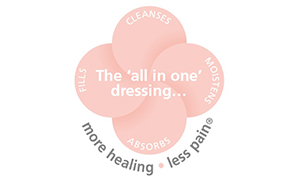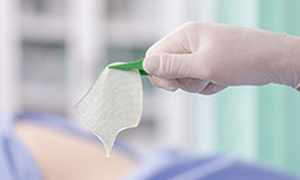Chronic wounds Resources
Here, we present PolyMem®, a unique multifunctional polymeric membrane dressing that is indicated for a wide range of acute, chronic and specialist painful wounds.
Highly exuding wounds can affect people of all ages, often causing distress, anxiety and social isolation. Managing these challenging wounds can also represent a significant cost to the NHS. This article looks at exudate and the difference between normal and excessive exudate and examines the causes of a high volume of exudate and its effect on the patient. Exudate assessment is an important part of holistic assessment, which is also explored in the article. Strategies GPNs can employ to manage exudate, including wound dressings and other devices, are then discussed.
Chronic wounds are a complex and challenging health problem for all concerned, but most importantly for patients who have to live with them. Chronic wounds impact negatively on patients’ quality of life, often accompanied by a loss of independence and, in many cases, a sense of hopelessness. The global prevalence of wounds is predicted to rise with an ageing population, and rapidly increasing numbers of people with obesity and diabetes. In an NHS with escalating costs and a shortage of qualified nurses, it is not sustainable for nurses to continue to manage all wounds. By incorporating shared decision-making and involving patients in their own care, it will be possible to improve outcomes for all concerned.
The number of patients with venous leg ulcers is growing as the population ages. Recent estimates indicate that 730,000 people with venous leg ulcers were treated in 2012/13 (Guest et al, 2015); a number that is predicted to increase year on year. Venous leg ulcers can be difficult to manage in some patients despite best practice, particularly in those with multiple comorbidities. These patients can develop chronic ulceration that can be present for months or even years in some cases. The cost of managing these patients presents a significant burden to the NHS. An evaluation was carried out to determine the efficacy of LQD® wound spray, a unique spray-on wound dressing that contains Chitosan FH02™, in promoting wound healing in patients with longstanding venous leg ulcers. The results indicated that LQD wound spray contributed to putting the wounds onto a healing trajectory.


